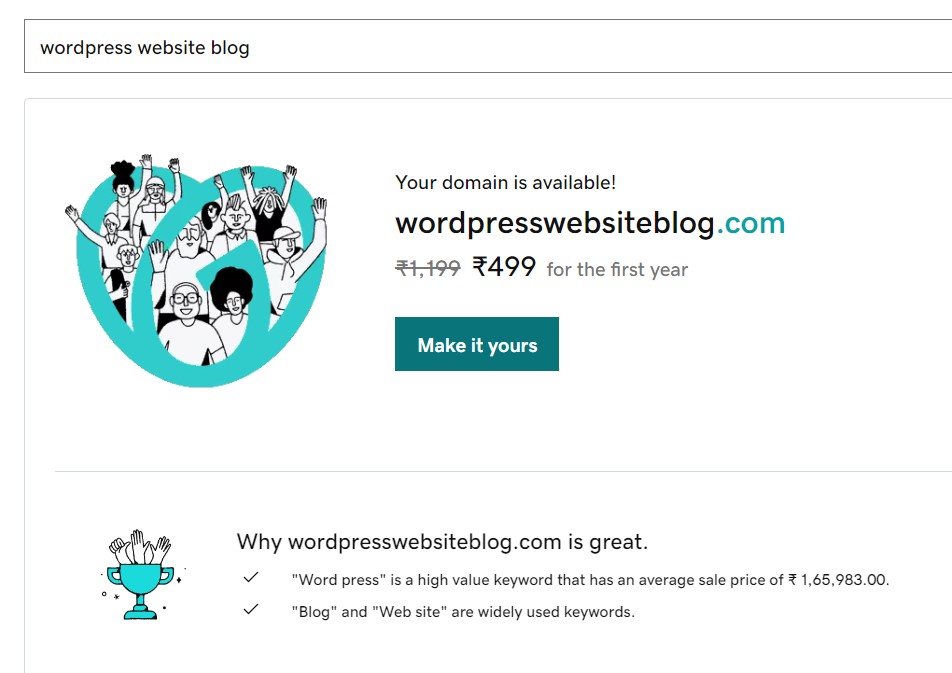Are you an artist hoping to share your creations with the world? You might be a self-employed designer, photographer, writer, or artist looking for a method to show off your abilities to potential customers. Your ideal option may be a WordPress portfolio blog. WordPress is the go-to platform for producing a great online portfolio that accurately portrays you and your company thanks to its limitless customization choices, user-friendly design, and strong capabilities.
Imagine having a gorgeous website that properly encapsulates your distinct sense of style and creativity. When it comes to personalization, WordPress has no bounds. To obtain the ideal design for your site, you can pick from thousands of themes, both free and paid. You may expand the functionality and user-friendliness of your website by adding features like social media integration, contact forms, and statistics using simple plugins.
A WordPress portfolio blog may help you develop your brand and position yourself as an authority in your industry, so it’s not just about looks. You may build a devoted audience and become known as a thought leader in your sector by exhibiting your work and producing blog entries on issues relating to your industry.
It may seem difficult, but setting up a WordPress portfolio blog is simpler than you may imagine. A beautiful website may be launched quickly with only a few easy steps. WordPress has a user-friendly interface that makes modification and upkeep simple, regardless of whether you’re a seasoned professional in technology or a novice to the world of web design.
Why then wait? With a WordPress portfolio blog, it’s time to unleash your creativity and improve your online visibility. A WordPress portfolio blog may help you accomplish your goals and advance your profession, whether you’re trying to draw in new clients, show the world your work, or position yourself as an industry thought leader. So why are you still waiting? Start now and see how much your web presence will grow!
What is WordPress?
As an open-source content management system (CMS), WordPress enables anyone to use it to create any type of website they can think of. Anyone may run a website or blog thanks to its free web publishing platform and content management system (CMS). In 2003, it began as a blogging platform but quickly evolved into a CMS and then a complete platform for developing websites. WordPress is the most widely used web software among both businesses and consumers, powering 43% of all websites on the internet. It is a versatile platform that can be used for a variety of things, including developing social networks and online stores. WordPress is dedicated to maintaining its enormous flexibility advantage while also becoming even more beginner-friendly.
WordPress enables easy no code website development and designing and is being used my huge number of small and medium scale companies. You can learn web development using WordPress and start making crazy design websites for clients and earn more along with blog monetization.
There are many web design institute in Delhi providing offline and online web development course.
Why WordPress for earning online?
With its flexibility, WordPress can be used to create anything from a classy portfolio website to an online store. WordPress is the most widely used web software among both businesses and consumers, powering 43% of all websites on the internet. The ability to showcase all of your amazing work is one of the main benefits of setting up a portfolio website on WordPress. WordPress is also SEO-friendly, making it simple to link with effective SEO plugins like AIOSEO, which, if you know a few fundamental SEO principles, may help you build your own marketing chances through creating blog posts. It’s more than adaptable and has a robust ecosystem of plugins that let you increase functionality.
You are on the right boat.
1) Choose a Domain Name and Hosting Provider
2) Install WordPress
3) Choose a portfolio WordPress theme
4) Install and activate your chosen theme
5) Install Essential plugins
6) Create your portfolio page
7) Add your portfolio page to your WordPress menu
8) Customize your blog
9) Publish your first blog post
10) Share your portfolio
How to develop website blog without coding on wordpress to start earning
Step 1: Choose a Hosting Company and a Domain
Selecting a hosting company and domain name is the first step in setting up a WordPress portfolio blog. A domain name is the online address people will use to find your website, whereas hosting companies give server space for your website. There are numerous hosting companies to pick from, including Hostinger, Godaddy, and Bluehost. When choosing a service, it is crucial to shop about and compare their various plans and features.

Step 2: Activate WordPress
Once you’ve selected your hosting company and domain name. Most hosting companies allow you to install WordPress with only one click. The alternative is to manually install WordPress on your server using a download from the official WordPress website.
Step 3: Choose a theme
WordPress offers tens of thousands of themes, both free and premium. A theme is a template that controls how your website will look and be organized. Think about your branding and the kind of content you’ll be showing on your portfolio blog when selecting a theme. Also, it’s critical to pick a responsive theme that works well on desktop and mobile platforms.
Step 4: Install and Turn on Your Selected Theme
You must install and activate your WordPress theme after selecting it. Using your WordPress dashboard’s Appearance > Themes section, you can perform this action. For installation, just select “Add New” and then “Upload Theme.” Once the theme has been installed, click “Activate” to make it active.
Step 5: Install the necessary plugins
Installing a few crucial plugins will help your WordPress portfolio blog run more effectively. These plugins can assist with chores like contact form development, social media sharing, and search engine optimization. Consider using plugins like Yoast SEO, Jetpack, and Contact Form 7.
Step 6: Build your portfolio pages
Once your WordPress theme and plugins are set up, you can start building your portfolio pages. For each undertaking or category, you want to highlight on your blog, you should make a distinct page. A brief summary of the project, some photographs or videos, and any more pertinent information should all be included on each page.

Step 7: Add Your Portfolio Pages to Your WordPress Menu
You must include your portfolio pages in your WordPress menu after you’ve developed them. Using your WordPress dashboard’s Appearance > Menus area, you can perform this action. Your portfolio pages can be easily added to the menu so that they appear on your blog’s navigation.
Step 8: Customize Your Webpage
With plugins and widgets, WordPress enables you to alter the look and functionality of your website. Plugins are add-ons that offer extra features like analytics, social network integration, and contact forms. Recent posts, social media links, and search fields are just a few examples of the little blocks of content known as widgets that can be put to your website’s sidebar or footer.
Step 9: Submit Your First Blogging Entry
It’s time to start producing material now that your WordPress portfolio blog is configured. Your blog entries can include progress reports on your most recent projects, tutorials, or general business news. Simply click Posts > Add New from your WordPress dashboard to publish your first blog article. To make your content visually engaging, format it using headings, pictures, and videos. Test your site’s functionality, including the navigation, contact forms, and social media integration, before releasing.
Step 10: Share Your Portfolio Blog
Finally, once your portfolio blog is set up and you’ve published your first post, it’s time to share your blog with the world.
Making a WordPress portfolio website can be a terrific method to market your skills and make money. Potential clients can see your work in person by visiting a professionally created portfolio website, which allows you to showcase your originality and abilities. With its flexibility, WordPress can be used to create anything from a classy portfolio website to an online store. The ability to showcase all of your amazing work is one of the main benefits of setting up a portfolio website on WordPress. It can be very lucrative. You can make money from your WordPress portfolio blog in the following ways:
With freelancing, you can exhibit your abilities and draw in clients. Web design, content writing, photography, graphic design, and other services are all examples of freelance work. You can draw clients who are looking for your specific set of abilities by showcasing your work and outlining your offerings. Using your WordPress portfolio blog to promote goods or services in exchange for a commission is known as affiliate marketing. If you have a sizable audience or your blog is specialized in a particular market, this can be a terrific method to monetize it.
In conclusion, creating a WordPress portfolio blog can be an excellent way to showcase your work and build your brand. By following these steps, you can create a professional-looking site that reflects your style and expertise. Good luck!
Learn about wordpress web development from top trainers teaching in best web development institute in Delhi

